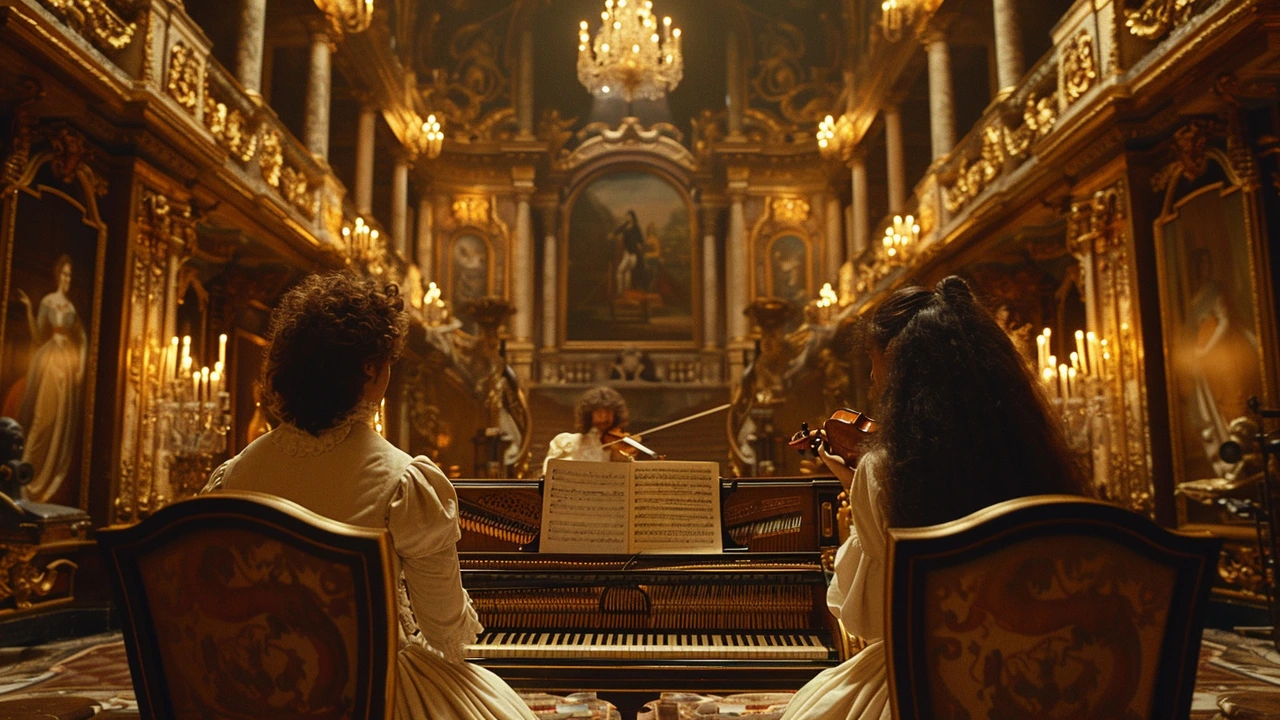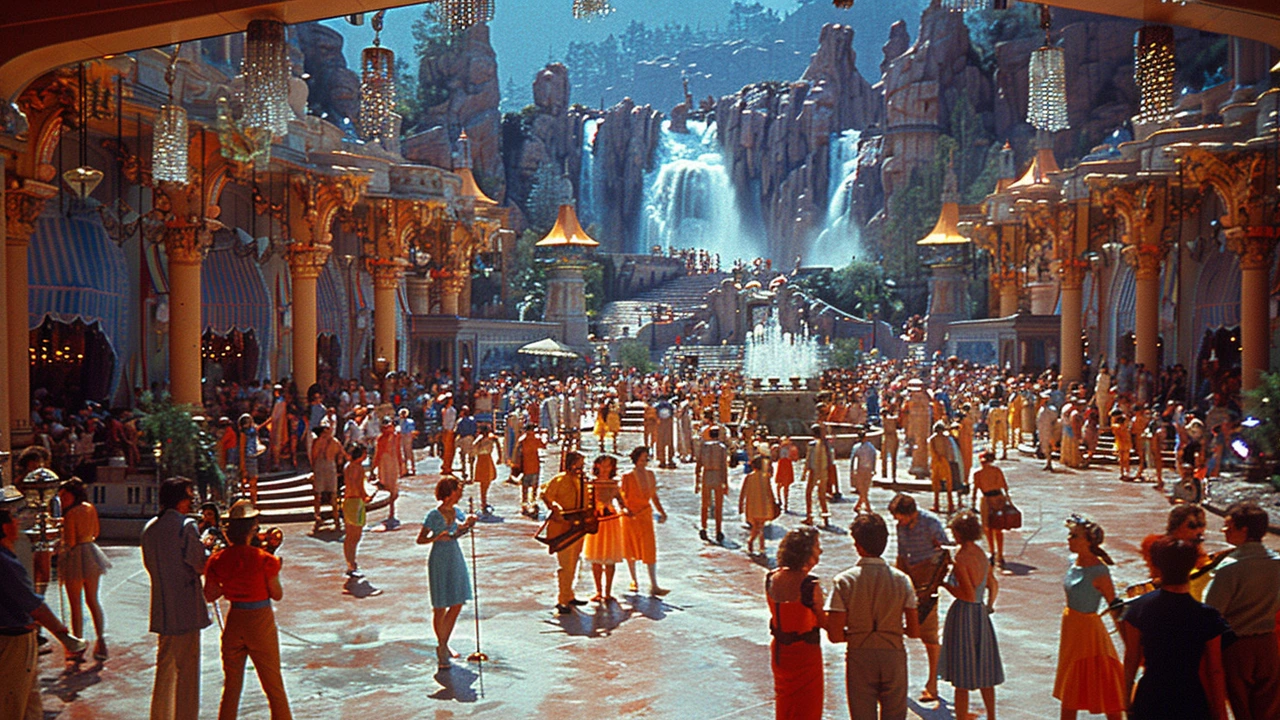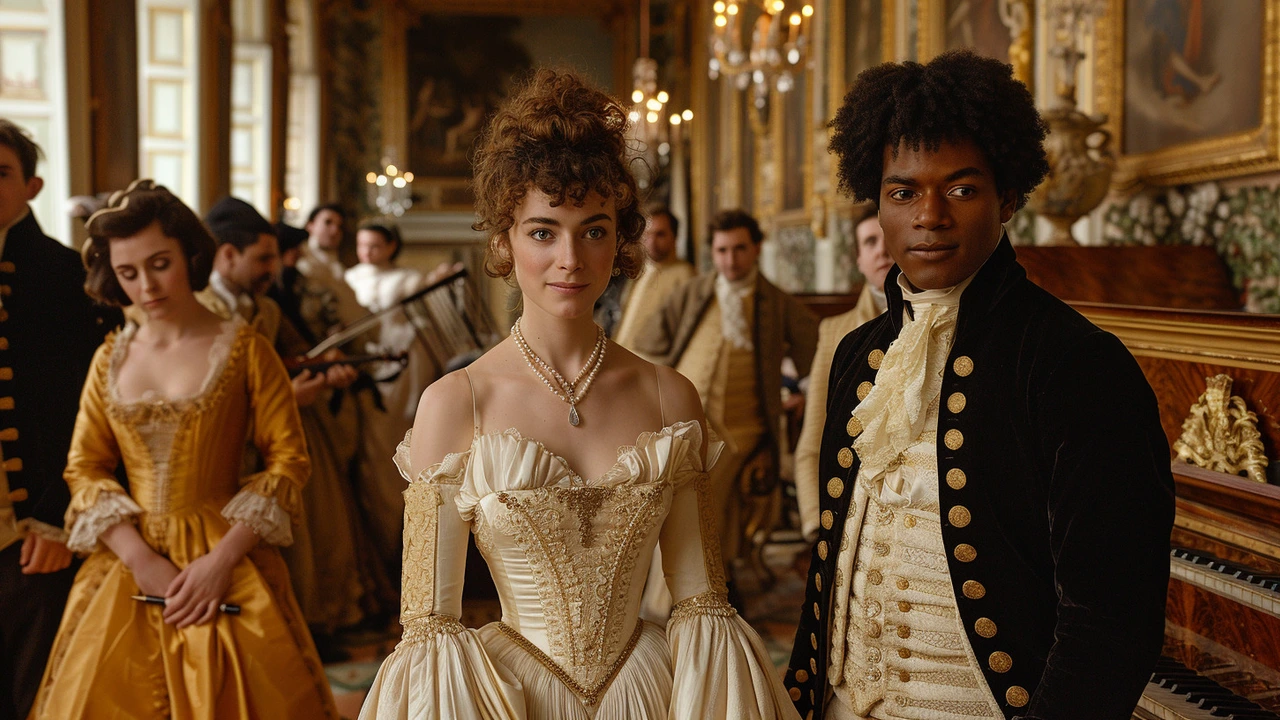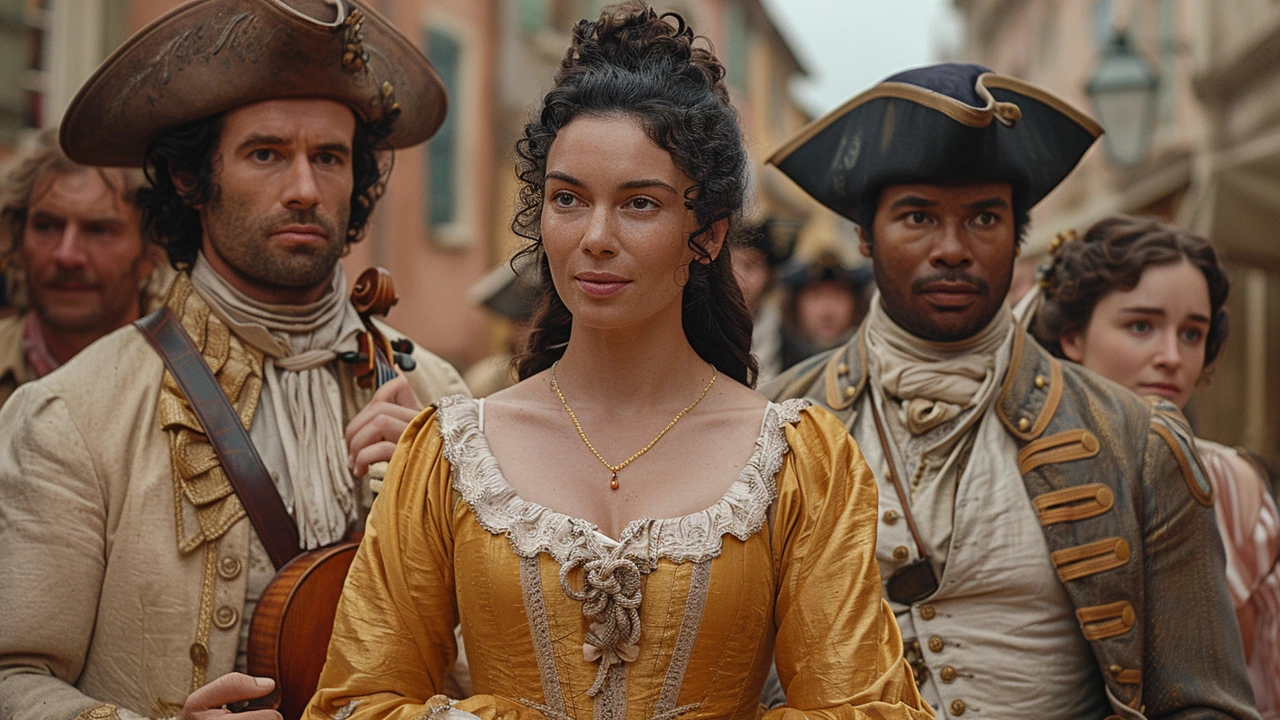Exploring Rococo: The Golden Age of French Art
 Jun, 29 2024
Jun, 29 2024
Rococo, often hailed as the epitome of 18th-century French artistic exuberance, marks a period where art became a delightful escape from the rigid norms of its predecessors. Born as a reaction to the more serious and grand Baroque style, Rococo art embraced whimsy, elegance, and lightness.
In the early 1700s, France saw the dawn of this unique style, characterized by its intricate details and playful themes. The Rococo movement did more than just influence paintings; it seeped into architecture, interior design, and even fashion across Europe. The charm of the Rococo style lies in its ability to turn everyday scenes into enchanting visual tales, filled with graceful curves, pastel hues, and ornate patterns.
This article will guide you through the origins and evolution of Rococo, its distinct characteristics, the notable artists who championed the style, and the enduring legacy that continues to inspire modern art and design.
Origins and Development
The Rococo style, also known as Late Baroque, originated in France in the early 18th century. It was during the reign of Louis XV that this highly decorative and theatrical art form came into its own. As the nation recovered from the grandeur and gloom of the Baroque era, Rococo emerged, emphasizing light-heartedness, asymmetry, and intricate designs. This period saw a shift in society where the French aristocracy sought to express their wealth and taste through their surroundings, and Rococo art filled that void perfectly.
One of the earliest examples of Rococo art can be traced back to the Hôtel de Soubise in Paris. Designed by Germain Boffrand, its salon features delicate carvings, pastel colors, and playful iconography, all staples of the Rococo style. This departure from the more solemn and structured Baroque art was like a breath of fresh air, focusing on charm and intimacy rather than grandeur and emotional intensity.
The term

Key Characteristics
The Rococo style, which flourished in France during the early 18th century, is celebrated for its elegance and whimsical charm. Unlike the grandeur and seriousness of the Baroque, Rococo art often focuses on light-hearted themes and intricate details. One of the most distinguishing characteristics of Rococo is its emphasis on asymmetry and curves. Artists used swirling forms, scrolls, and tendrils to create a sense of movement and fluidity in their work, giving the art a lively, playful quality.
Colors played a pivotal role in Rococo artistry. Pastel shades like light blue, soft pink, and creamy white dominate the palette, contributing to the overall dreamy and serene atmosphere. Gilding was used liberally, adding a touch of opulence without overwhelming the senses. The use of light and shadow was subtle, aimed more at enhancing the delicate features rather than creating dramatic contrasts.
One cannot discuss Rococo without mentioning the ornate details. These included floral patterns, cherubs, and elaborate ornamentation that adorned everything from furniture to paintings. This intricacy was not only limited to fine arts; it permeated architecture and interior design as well. Rococo rooms were known for their exquisite molding, mirrored surfaces, and elegantly adorned ceilings, often with frescoes and chandeliers.
Subject matter in Rococo art also sets it apart. The themes often revolved around love, romance, and playful scenes from everyday life. Artists like Antoine Watteau celebrated romantic and pastoral themes, while François Boucher depicted mythological subjects with a touch of eroticism and humor. These light-hearted subjects provided a contrast to the heavy religious and historical themes prevalent in earlier periods.
Rich symbolism and allegory are other hallmarks of this period. For example, flowers symbolized love and beauty, while birds often represented freedom. These symbols added layers of meaning to the artworks, allowing for a deeper emotional connection with the viewer. A famous work that exemplifies this is Watteau's "The Embarkation for Cythera", a depiction of an idyllic pilgrimage to the island of love that is filled with subtle symbols enhancing the romantic theme.
Furniture and decor also mirrored the Rococo style. Elaborate carved woodwork, adorned with delicate motifs, was commonly used. Chairs and tables featured cabriole legs, which added a sense of lightness and grace. Walls were often covered in silk tapestries with intricate designs, and large, decorative mirrors were a staple in Rococo interiors.
In terms of architectural elements, Rococo favored more private, intimate spaces over grandiose halls. Rooms like salons became the center of social life, reflecting the movement's inclination toward personal and emotional expression. Ornate stucco work, cleverly integrated with paintings, graced ceilings, and walls, creating a cohesive, magical environment.
One noteworthy aspect of Rococo art is how it embraced theatricality. Artists employed dramatic gestures, playful poses, and expressive faces to convey emotion and narrative. This often created a sense of intimacy between the artwork and the viewer, drawing them into the scene's story and ambiance. An example of this is Jean-Honoré Fragonard's "The Swing", which is filled with a sense of flirtatious energy and hidden symbolism.
As one navigates the elements of Rococo art, it becomes clear why this period is considered the golden age of French artistic expression. The combination of intricate details, pastel hues, playful themes, and symbolic richness creates a unique style that captivates and enchants. It was both a reaction to the past and a glimpse into a world where art was intertwined with everyday joy and elegance.

Notable Artists and Works
The Rococo movement boasted a pantheon of talented artists who left an indelible mark on 18th-century art. Among these, none stand out quite like Jean-Antoine Watteau, François Boucher, and Jean-Honoré Fragonard. Their works encapsulate the elegance and whimsy that are hallmarks of Rococo.
Jean-Antoine Watteau is often credited with pioneering the Rococo style. His paintings, such as Pilgrimage to Cythera, capture scenes of romantic escapism and idyllic leisure. Watteau's brushwork is delicate, and his use of color is lush, evoking a sense of movement and sensuality. His ability to portray theater and fantasy within pastoral settings created a new artistic lexicon for Rococo aesthetics.
François Boucher, another giant of Rococo, was infamous not just for his paintings but also for his role as the court painter to Louis XV. Works like Madame de Pompadour and The Birth of Venus exemplify his penchant for erotic and mythological subjects, adorned with elaborate ornamentation. Boucher's work is known for its playful eroticism, pastel tones, and sumptuous textures.
"I think it is in collaboration that the nature of art is revealed." — Jean-Luc Godard
Then there's Jean-Honoré Fragonard, whose work The Swing might be one of the most renowned paintings from the Rococo era. This piece epitomizes the playful and sensual nature of Rococo, depicting a lady on a swing with her lover hidden in the bushes below. The lightheartedness, attention to detail, and vibrant colors make Fragonard a master of the Rococo imagination.
A Broader Impact
Alongside these artistic juggernauts, several other painters, sculptors, and decorators contributed significantly to the Rococo style. Giovanni Battista Tiepolo in Italy, for example, expanded the Rococo aesthetic to frescoes and grand tapestries, heightening the style to new heights of opulence.
Rococo wasn't confined to painting. In sculpture, artists like Clodion created elaborate works of art, filled with intricate details and playful motifs. His terracotta groupings often depicted mythological scenes and were highly sought after by royal patrons and wealthy collectors.
Architectural Wonders
Architecture also bore the imprint of Rococo. The Petit Trianon at the Palace of Versailles, designed by Ange-Jacques Gabriel, is a fine example of Rococo architecture. This small chateau embodies the intimate elegance and detailed interior design that characterizes Rococo. Intricate moldings, pastel shades, and elegant furniture choices create an atmosphere of refined leisure and beauty.
The Rococo period is not just an artistic movement but a cultural phenomenon that sought to beautify and bring joy to the everyday. Its impact on art, architecture, and culture persists, leaving a legacy of remarkable works that continue to enchant and inspire.

The Impact and Legacy
The Rococo movement, despite its relatively short span from the early to mid-18th century, left an indelible mark on the world of art and culture. The style's influence transcended borders, impacting not only France but the entirety of Europe, and even reaching the Americas. Rococo's playful and ornate aesthetic can still be seen as a significant influence on various art forms and design elements we encounter today.
One of the most prominent legacies of Rococo is its impact on interior design. The elaborate and intricate designs of Rococo interiors, with their use of mirrors, gilded woodwork, and pastel colors, set a new standard for luxury and refinement in European homes. Rooms designed in the Rococo style were meant to be intimate and inviting, a stark contrast to the grandiose and imposing Baroque interiors that came before them. The emphasis on comfort and elegance in Rococo design has carried over into modern interior decorating principles.
In the realm of painting, Rococo artists such as Antoine Watteau, François Boucher, and Jean-Honoré Fragonard left behind a body of work that continues to captivate art lovers. Their paintings, often depicting scenes of love, leisure, and play, embody the lighthearted spirit of the Rococo era. These works are celebrated for their soft color palettes, fluid brushstrokes, and an intimate portrayal of their subjects' charming daily lives. Even after the Rococo period came to an end, these artists' works remained influential, inspiring future generations of artists who sought to capture a similar sense of elegance and whimsy.
"The Rococo style, with its delicate charms and exuberant vivacity, continues to enchant and inspire, reflecting a golden era where art and life intermingled in joyous harmony.” - Art Historian Marie Dupont
The Rococo movement also played a significant role in the evolution of furniture design. Rococo furniture, marked by its ornate carvings, curvilinear forms, and intricate details, represented both artistic innovation and craftsmanship. Famous pieces from this era, such as the delightful work of cabinetmaker Jean-François Oeben, continue to be highly coveted not only as antiques but also as sources of inspiration for contemporary furniture designers who seek to merge functionality with decorative beauty.
Despite being often criticized for its perceived superficiality, Rococo's emphasis on pleasure and beauty offered a refreshing departure from the somberness of previous art styles. This shift opened the door for new types of artistic expressions. The Rococo period set the stage for the rise of neoclassicism, which sought to return to the classical simplicity and grandeur of ancient Greece and Rome. Yet, the playful and intimate nature of Rococo art persisted in various forms, subtly enriching the fabric of artistic development.
Moreover, Rococo's influence extends beyond visual art and design. The romantic and often frivolous themes of Rococo found resonance in literature and music. Composers such as François Couperin and Jean-Philippe Rameau infused their compositions with the same grace and lightness that typified the visual arts of the period. Likewise, in literature, the era saw the rise of playful and witty writing that explored themes of love and courtship, paralleling the sentiments depicted in Rococo art.
Ultimately, the Rococo era holds a special place in art history as a period of elegance, creativity, and unprecedented artistic freedom. Its legacy is characterized not just by its distinctive aesthetic but by its enduring influence on how art can capture and celebrate the joys of everyday life. A visit to any museum with a significant Rococo collection or an analysis of period-inspired modern designs reveals the lasting appeal and ongoing relevance of this golden age of French art.